With a reshuffle on the horizon this week, last week was Apprenticeships Week and Children’s Mental Health Week.
Parliamentary News
Cabinet Reshuffle – we are expecting a ministerial reshuffle to take place before Parliament enters recess at the end of next week. Politico speculates about who may be in and out of favour.
Brexit – Dods have produced an interesting briefing on the Brexit transition phase exploring the negotiating give and take and explaining what the key terms like ‘level playing field’ may translate as within the Withdrawal Agreement.
Contract Cheating – Lord Storey continues his campaign to end contract cheating by introducing the HE Cheating Services Prohibition Bill as a private members bill (PMB). As you’ll recall from previous policy updates PMB’s rarely succeed, however, they can raise visibility of the issue even when they fail. The Committee Stage within the House of Lords is next.
Private Member’s Bills – There’s no news on the Lord Holmes’ Unpaid Work Experience Prohibition Bill yet, we’re still waiting for the second reading and vote. However, Alex Cunningham, a Labour MP has also introduced a similar Bill entitled Unpaid Work Experience (Prohibition No. 2) through his win on the Commons’ PMB ballot. Alex’s bill (to prohibit unpaid work experience exceeding four weeks) is due to be read a second time on 27 March and will need to win the vote to continue passage through Parliament. Two very similar PMB’s progressing at the same time is an interesting Parliamentary twist that we’ll be watching closely. Unfortunately Alex’s PMB is number 14 in the queue so it may not ever progress due to lack of parliamentary session time.
The MP’s winning the Common’s PMB vote have declared the topics their intended legislation will cover. There is little of direct interest for the HE sector beside Alex’s unpaid work experience Bill.
(Welfare of Children) PMB aims to impose duties on certain education and training providers in relation to safeguarding and promoting the welfare of children. Mike Amesbury’s PMB (first to be debated) aims to pick up the provision for guidance to schools about the cost aspects of school uniform policies. You’ll remember mention of this floated around Parliamentary debate several times during the last Parliament, gaining traction but not progressing into law or regulation.
Select Committees
Several of the new Education Select Committee members have been revealed by Tes. Whips from Labour and Conservatives held elections for Committee members last night, but the result have not officially been announced. Tes has been told, however, that new members from the Conservative side are all newly-elected MPs and include a former secondary teacher and a former chair of a social mobility charity. They are understood to be:
- David Johnston (Con, Wantage)
- David Simmonds (Con, Ruislip, Northwood and Pinner)
- Tom Hunt (Con, Ipswich)
- Christian Wakeford (Con, Bury South)
- Jonathan Gullis (Con, Stoke-on-Trent North)
From the Labour side, the following members are understood to be elected to the Committee:
- Apsana Begum (Lab, Poplar and Limehouse)
- Fleur Anderson (Lab, Putney)
- Returning – Lucy Powell (Lab, Manchester Central)
- Returning – Ian Mearns (Lab, Gateshead)
Education Committee Members’ Priorities
Jonathan Gullis who is a teacher (and had to return to work at his Birmingham secondary school on the day after the general election) has set out his priorities as reducing the sizes of large multi-academy trusts to ”give power back to schools” as well as investigating the effectiveness of alternative provision and the possibility of introducing new grammar schools into deprived areas. He said: “There are a number of things to look at to be quite frank. Obviously the government has pledged a £14 billion injection into the education system which is sorely needed – and my job, along with my fellow committee members, will be to make sure this ends up in the hands of headteachers and that the money is being spent on pupils”.
David Johnston is a former chair of the Social Mobility Foundation charity. He said: “I’ll be looking at whether we are improving life chances for the most disadvantaged pupils. We also need to get the best teachers into the schools that find it difficult to attract teachers.”
Tom Hunt intends to focus on special educational needs as he has personal experience of both dyslexia and dyspraxia. He said: “I really struggled at school but I was really fortunate I got the support I needed, so I turned it around and did pretty well academically, but I’m acutely aware that a lot of pupils don’t get the support they need so that’s what I’m most passionate about.”
Labour Leadership Contest – The hustings continued for the leadership candidates all through this week.
PMQs
Local MP Michael Tomlinson (Mid Dorset and North Poole) featured in Prime Minister’s Questions this week when he asked whether the PM would prioritise family hubs and ensure that they were linked to Early Years Strategy, the Troubled Families Programme, and children’s’ services reform. The PM said £165 million had been allocated to extend the Troubled Families Programme this year.
National Apprenticeship Week
It is National Apprenticeship Week and there has been a plethora of employers and organisations celebrating apprenticeships amongst discussions of future changes and sharing information to ensure more potential students consider apprenticeships as an alternative to university.
Hitting the headlines was the DfE survey with Mumsnet which set out to understand parents’ preconceptions on apprenticeships. They found:
- 63% of parents equated an apprenticeship with menial tasks believing their child would spend time making the tea (also seen as unchallenging and low quality)
- One third of parents thought apprenticeships were mainly for manual trades
- 45% hadn’t heard of degree apprenticeships
- 45% felt a university degree was more valued by employers than an apprenticeship
- 67% felt apprenticeships were inclusive and were for everyone regardless of background or age
- 49% didn’t feel they knew enough about apprenticeships to talk to their children about it as an option
Education Secretary Gavin Williamson comments on the survey:
- This research shows that outdated views are holding young people back from pursuing their dream career. Every parent wants the best for their children and when they ask you for advice about their futures, it’s incredibly daunting. But I know that when I’m asked for help by my children I will absolutely encourage them to consider an apprenticeship. So as we celebrate the life changing potential of apprenticeships I would urge all parents to do the same and look beyond stereotypes and embrace every opportunity
Here is the Mumsnet press release on the survey. Mumsnet Founder Justine Roberts said:
Other sources
- Wonkhe report that in the TES Shadow HE and FE minister Emma Hardy writes about the difficulties faced by SMEs in accessing funding for apprenticeships.
- HEPI has a blog on apprenticeships – what they are and whether higher education should have a role in delivering them.
- The National Centre for Universities and Business runs a blog that asks whether degree apprenticeships can really meet all that is promised on issues like social mobility and closing the skills gap.
Part Time Students
HEPI have published Unheard: the voices of part-time adult learners aiming to prompt a re-think of how mature part time students are engaged and attracted to degree level study. There has been a 61% drop in part time students since 2010. Author, Dr John Butcher from the Open University, said:
- Official policies like the National Student Survey and widening participation initiatives are part of the problem because they tend to play down or even ignore part-time learners.
- Part-time students are disproportionately likely to come from parts of society traditionally under-represented in higher education. Ministerial statements about there being a record numbers of [disadvantaged] students ignore part-time learners. When they are included, a big drop in the number of students from disadvantaged backgrounds is revealed.
- A new approach is overdue, especially in England which lags behind other parts of the UK in protecting part-time education. Otherwise, part-time students will continue to be peripheral, feeling like tourists passing through higher education but knowing they do not really belong.
Nick Hillman, Director of HEPI, said: …people who want, or need, to study part-time have less choice than they did. The removal of some public funding in 2008, the tripling of tuition fees in 2012 and the withdrawal of some courses have had a terrible combined impact.
Excerpts from the paper:
- The crisis engulfing part-time adult learners in England points to an impoverished future in which higher education morphs into a purely full-time experience for 18-year olds fortunate enough to be born in the right place, attend the right school and gain the right A-Level grades. No more ‘second-chance’ transformations, no more learn-while-you-earn, no more enriching learning with contributions from adults who can bring different life experiences. Flexible opportunities for those disadvantaged individuals who cannot study full-time may all but vanish.
- My fear is that political infatuation with the employability discourse around advanced skills for adults, as well as a series of muddled protestations about social mobility, have concealed the part-time issue. The key stakeholders who could amend policies and drive strategies to energise part-time learning in higher education are instead busily engaged in addressing other challenges, such as: [TEF, National Student Survey, APP/WP initiatives, achieving sufficient student recruitment]
- Policymakers should recognise part-time higher education is an optional world in which complex individual student needs trump the homogeneity of institutional systems. Part time students can feel peripheral, like tourists visiting higher education but who know they do not really belong.
Page 13 onwards explores the voices of mature part timers within these three themes:
- What gets in the way? Life, money, inflexibility.
- What do we want? Clarity, inclusivity and signposts.
- What can we do? Integrate skills and feedback to enhance confidence.
And intersperses recommendations on elements universities can change to make part time learning more accessible and successful.
OfS
The OfS have released a new blog from a mature healthcare student describing the positive experience he had whilst studying radiography. The blog talks about gender balance within the healthcare sector and taking the leap from established career and family to return to study full time. The student describes the additional opportunities he engaged with including the Council of Deans Student Leadership Programme, working with the OfS, and as a Student Observer to the UK Council (radiography). The upbeat blog is quite the counterpoint to the HEPI publication which describes isolated part time students who never fully develop their sense of institutional belonging.
Further Education
The Government have announced a £24 million investment in FE to enable the sector to recruit, retain and develop high quality FE teachers, including those needed for the new T levels. This is part of the £400 million announced in August last year. It includes:
- £11 million to provide bursaries and grants worth up to £26,000 to attract talented people to train to teach in FE, in priority subject areas such as STEM, English and SEND teaching.
- A £10 million boost to expand the Government’s Taking Teaching Further programme, delivered in partnership with sector body the Education and Training Foundation (ETF), which sees industry professionals working in sectors such as engineering and computing to retrain as further education teachers. The scheme has already supported over 100 people to work in FE across the country so far. This additional funding will support up to 550 more people to train to teach a range of technical subjects in 2020.
- £3 million for high-quality mentor training programmes to support FE teachers – including those just starting out in teaching – to develop and progress.
On the £400 million announced in August 2019 Education Secretary Gavin Williamson said:
- As former FE students, the Chancellor and I both know first-hand how important the further education sector is so I’m really pleased that today that government is giving our sixth forms and colleges a major funding boost – the single biggest annual uplift since 2010.
- This investment will make sure we can continue to develop world-class technical and vocational education to rival countries on the continent so we have a highly skilled and productive workforce for the future.
Specifically on the £24 million Gavin Williamson said:
- Our ambitions for a world-beating technical education system can only be achieved if we have outstanding teachers who will inspire the next generation.
- I’ve seen first-hand just how much brilliant work is already going on up and down the country. I want to thank the many thousands of further education teachers doing fantastic jobs and changing lives.
- This investment is a clear signal of the government’s commitment to helping the FE sector to continue to recruit and retain excellent teachers who will help to unlock their students’ full potential.
The Government will also begin to collect FE workforce data every year from 2020/21to ensure they have robust information and a greater understanding of who makes up the FE sector.
On the same day City AM published The graduate premium is little more than a myth – invest in further education instead. The piece is exactly as the title describes. It argues for less investment in HE (particularly disdainful of the increase in the number of young people attending HE) and suggests that better funded FE provision would result in a ‘FE premium’ salary boost. Excerpt:
Why pay extra for something which is in excess supply? This is exactly how it has turned out. Many graduates end up in mundane, low-paying jobs. The Office for National Statistics shows that 31 per cent of graduates have more education than is required for the work they are doing.
Parliamentary Questions
Erasmus & International Students
Chris Skidmore answered ANOTHER question relating to Erasmus – no new news – poor Chris is probably reciting these same answers in his sleep now.
Lord Duncan of Springbank, answering on behalf of the Government, sidesteps responding to a question asking how much budget has been set aside for the Horizon Research Programme beyond 2020.
The House of Commons Library has published a briefing paper on The Erasmus Programme.
Key facts:
- 9,720UK HE students participated in the 2017 ‘call’ (application period) for study placements abroad through the Erasmus+ scheme.
- In 2017/18, the most popular host countries for study placements were: Spain (2,220), France (2,049), Germany (1,302), Netherlands (812), and Italy (711).
- The total value of all Erasmus+ projects funded in the UK has increased in each year from €112millionin the 2014 call to €145million in 2017.
- The UK was the 8thhighest participating country in the programme in 2017.
- 31,877 students came to the UK (all study and work placements) during the 2017 call.
There was also a parliamentary question on international students asking how many university places were allocated to non-British students.
Disadvantaged Attainment Gap
Q – Ben Bradley: To ask the Secretary of State for Education, what steps his Department is taking to support working class boys to close the attainment gap. [6162]
A – Nick Gibb:
- Educational achievement is at the heart of this Government’s commitment to ensure no young person is left behind because of the place or circumstances of their birth. Due to our reforms, 86% of pupils attend a Good or Outstanding school compared with 66% in 2010.
- ‘Working class’ is not a description recognised or measured by the Department. We measure the outcomes of those pupils from disadvantaged backgrounds as defined by the benefit-related definition for ‘disadvantaged’. We recognise that young people from disadvantaged backgrounds – including those currently or formerly claiming free school meals and currently or formerly looked after – may face extra challenges in achieving their potential at school. We introduced the pupil premium in 2011 and have invested over £15 billion – and another £2.4 billion this year – so that schools have the resources to provide extra support for disadvantaged pupils of all abilities. White disadvantaged boys and girls constitute the largest group of eligible pupils and so benefit significantly from this extra support.
- Against a background of rising standards, disadvantaged pupils are catching up with their peers. The attainment gap index shows that since 2011, the gap at the end of primary school has narrowed by 13% and the gap at the end of secondary school has narrowed by 9%. This indicates better prospects for a secure adult life for disadvantaged pupils. Our reforms, and the focus provided by the pupil premium, have supported this improvement.
- The Department recognises there is more to do for disadvantaged pupils. Our ambition is to halve the number of children who finish Reception without the communication and reading skills they need to thrive. Our £72 million Opportunity Areas programme will focus resource on areas with low social mobility. We have also dedicated £24 million to Opportunity North East to address the specific challenges in that region.
- The Department’s establishment of the Education Endowment Foundation (EEF) with a £137 million grant has ensured that schools have access to high quality, evidence-based, effective practice drawn from hundreds of trials across England. We recommend that schools consult the EEF’s resources, particularly its recent ‘Pupil Premium Guide’, when they are considering how best to support their pupils and close the attainment gap.
Research
Collaboration – UUK issued a press release on Brexit day to reaffirm their commitment to working with HE and research institutions across Europe. The group called on their respective Governments to make this a priority as discussions about the future relationship take place. UUK describe the membership of the group: a total of 36 major domestic and international organisations, which includes the European University Association (EUA), 24 National University representative bodies, the Confederation of British Industry (CBI) and many other bodies across Europe. Excerpt from their joint statement:
- “We, the major bodies representing, and partnering with, science and higher education across the UK and Europe, are united in agreeing that we wish to continue to work together following the departure of the UK from the European Union. We call on our national governments and the European Commission to act on the commitments of the political declaration and work swiftly to agree a basis for continued collaboration through the UK’s full association to Horizon Europe and Erasmus+. Swift agreement in this area of clear mutual benefit would be good for all of us and should be reached before the end of 2020, allowing for the development of innovative and stronger collaborations over the decades to come.”
Diversity and underrepresentation – Advance HE have published Increasing Diversity: Tackling underrepresentation of protected groups in HE. It recommends developing quantitative and qualitative skills in institutional research when examining issues of student equity. Wonkhe report that:
- the recommendations draw on the findings of eleven projects that designed and implemented interventions to address specific institutional inequities. And that a wider theme is provider’s reluctance to consider targeted outreach and “positive actions”. A detailed set of definitions set out the legal position. Providers noted that targeted work had raised the profile of diversity more generally, and allowed for increased staff awareness of issues via new and challenging conversations.
Other news
Sector Leading: A new Wonkhe blog written by Bristol Student Union’s Education Officer looks the value of a university being recognised as ‘sector leading’ with an eye on what this means for equality, diversity and inclusion, particularly taking risks and trying out new ways to tackle problems and improve the student experience.
- They’re often proud of the innovative work they’ve been recognised for – and keen to communicate it. But whilst this could be an indicator that a university has gone “above and beyond”, it raises the question of whether the motivation is competition – being the first to achieve a change – or whether it’s a genuine indication of the intention to continuously be a better and more inclusive place….while there ought to be recognition given to a university that exceeds sector expectations, it is worth senior managers (and sector bodies) thinking about the effect this culture has on the motivation and appetite for change in their institutions – specifically in areas of policy on issues that require careful attention.
- The role of the OfS adds another dimension to this. It talks about wanting universities to do better, but student officers around the country report that often its influence acts in reverse… The fear of breaching a condition of registration, dropping a TEF medal or losing money leads institutions to “play it safe”, focus relentlessly on TEF metrics (to the detriment of things not counted or measured).
- Competition for student numbers has left so many of us involved in the leadership, governance and management of universities in “constant consciousness” of the impact that a programme or decision might have on reputation. At best it has a chilling effect on bravery or investment with obvious risks or without clear reputational returns. At worst, the need to recruit drives almost all decision making.
- ….[in ]the coming decade, huge issues remain unresolved. Where and how the sector intends to expand to meet demand for HE without killing communities is one. Tackling deep racial inequalities in the middle of a nasty, anti-PC culture war is another. We need real answers on climate change, to find a way to tackle the costs of student accommodation, and find a way to incentivise the development and improvement of teaching that commands more support than the TEF does now.
- To get there, we need creativity, humility and collaboration – and that means that the idea of being a “sector leading” institution needs to go. This type of discourse fails both students and staff. What should replace it should be a new, more genuine sentiment – focused on what we want to collectively achieve.
Student Loans Company: Professor Andrew Wathey (VC Northumbria University) has been appointed as the interim Chair of the Student Loans Company (SLC).He has been a Non-Executive Board member at the SLC since 2018 and was Chair of the SLC Stakeholder Forum between 2010 and 2017.
Hedgehog rankings: Hedgehog fans will be pleased to know that the Preservation Society has launched a TEF style Gold, Silver Bronze accreditation scheme for universities that are looking after their campus hedgehog population.
Mental Health: Wonkhe report that the OfS has awarded £95,000 to student mental health charity Student Minds to develop a Charter Award Scheme, following the publication of Student Minds’ Mental Health Charter. At school level the National Association of Head Teachers has issued a press statement on the (almost) doubling of the numbers of counsellors needed to support school pupils. In 2016 36% of schools sought help for children’s mental health issues, in 2019 it rose to 66%. It was Children’s Mental Health Week this week.
Student Accommodation: The BBC report on three companies who failed to meet fire safety standards in a student residence in Leeds. Action was taken and the companies fined £670,000 in total after a concerned parent reported the safety breaches. Meanwhile Deloitte said the number of student beds under construction in Britain’s biggest regional cities has fallen 16.6% due to concerns over potential oversupply (reported in The Times).
IT: Regulations relating to the Digital Economy Act 2017 require that IT qualifications be provided free of charge for those aged 19+ who do not already hold an appropriate qualification standard in certain specified IT areas.
The Future: The Association of University Administrators are running a survey as part of research identifying future development needs and how professional service roles are developing during the current rapid changes for the HE sector. The survey is open until the end of February.
Student Vote: The impact of the supposed student vote did not deliver the majority Theresa May expected in the 2017 snap general election. The phenomenon has been analysed ad nauseam ever since (revealing it is far more complex than a student vote). However, the Conservatives are concerned to court the younger vote and wary of constituencies with large student populations. Boris Johnson even unsuccessfully tried for an early September 2019 general election reputedly in part to decrease the impact of the student vote by holding it before or in the transition of the beginning of term when students would not be registered to vote in the local university address. HEPI have an interesting blog by Dean Machin (Policy Advisor at Portsmouth University) who tackles some of the anti-student suggestions on limiting the vote and sets it in a wider context by applying the logic to other marginalised sectors within society (the elderly, carers, apprentices, and the terminally ill) – with some results which would be politically unpalatable. It is worth the quick 2 minute read.
Subscribe!
To subscribe to the weekly policy update simply email policy@bournemouth.ac.uk
JANE FORSTER | SARAH CARTER
Policy Advisor Policy & Public Affairs Officer
Follow: @PolicyBU on Twitter | policy@bournemouth.ac.uk

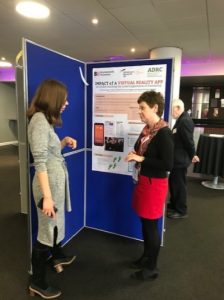
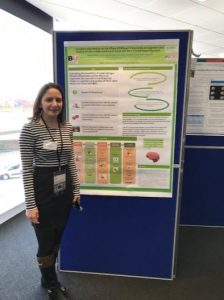
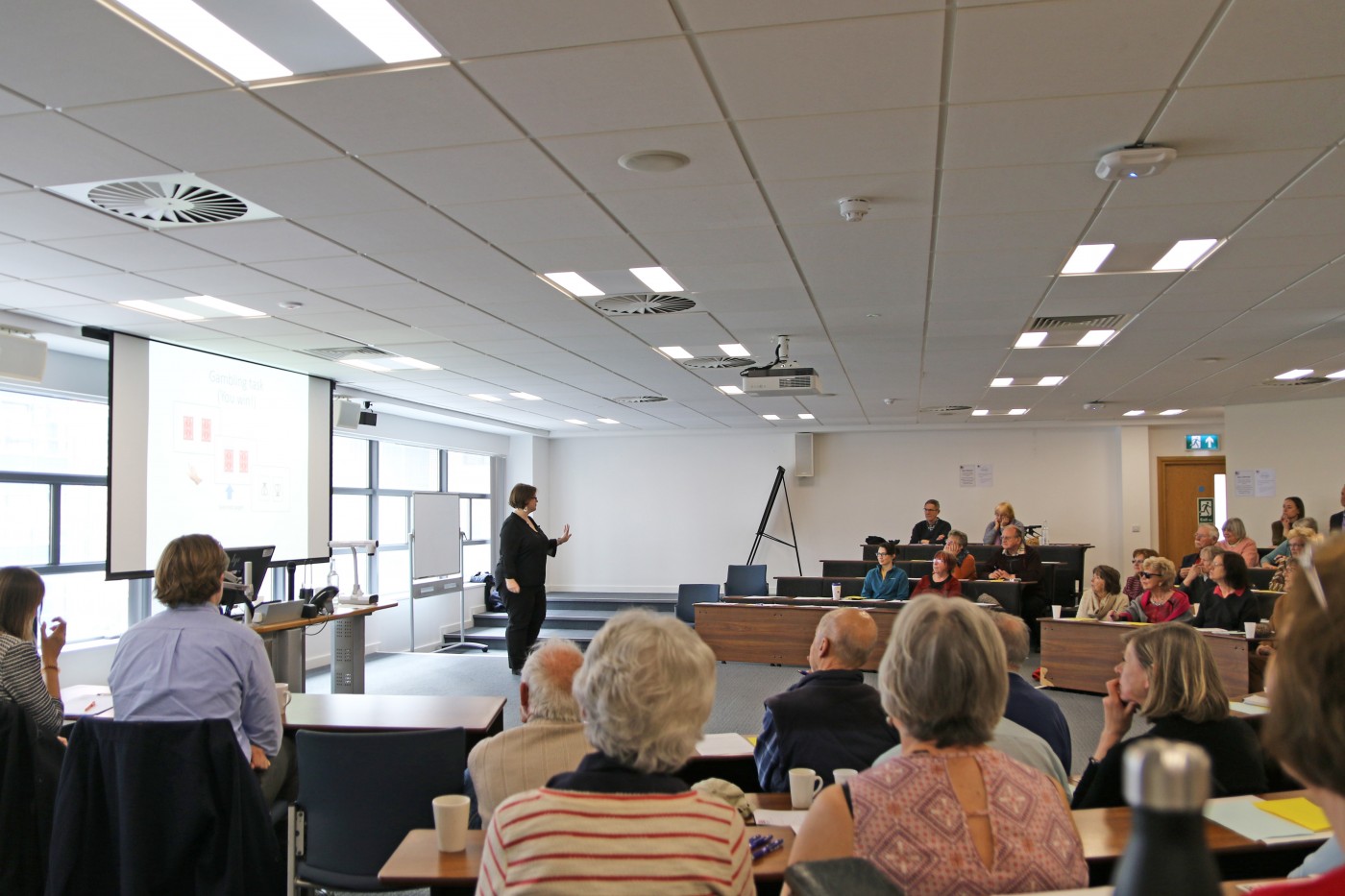
 Dr. Ann Luce, Principal Academic in Journalism and Communication in FMC has been elected to the Council of National Representatives for the International Association of Suicide Prevention (IASP).
Dr. Ann Luce, Principal Academic in Journalism and Communication in FMC has been elected to the Council of National Representatives for the International Association of Suicide Prevention (IASP).


 Dr Kip Jones, Reader in Qualitative Research and Performative Social Science retires from Bournemouth University at the end of February, but will continue with PhD supervision on a part-time basis. He has four potential publications in discussion with publishers, including a volume on PSS.
Dr Kip Jones, Reader in Qualitative Research and Performative Social Science retires from Bournemouth University at the end of February, but will continue with PhD supervision on a part-time basis. He has four potential publications in discussion with publishers, including a volume on PSS. 
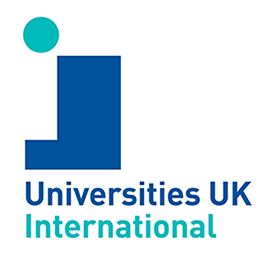
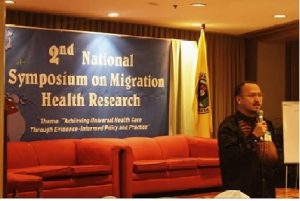 pines.
pines.











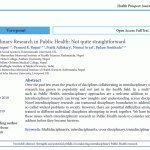 BU attendance at third annual GCPHR meeting in June
BU attendance at third annual GCPHR meeting in June Interactive Tangible and Intangible Heritage Applications – BU student work featured in new book chapter
Interactive Tangible and Intangible Heritage Applications – BU student work featured in new book chapter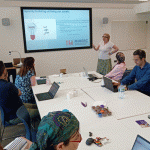 Second NIHR MIHERC meeting in Bournemouth this week
Second NIHR MIHERC meeting in Bournemouth this week MSCA Postdoctoral Fellowships 2025 Call
MSCA Postdoctoral Fellowships 2025 Call ERC Advanced Grant 2025 Webinar
ERC Advanced Grant 2025 Webinar Horizon Europe Work Programme 2025 Published
Horizon Europe Work Programme 2025 Published Horizon Europe 2025 Work Programme pre-Published
Horizon Europe 2025 Work Programme pre-Published Update on UKRO services
Update on UKRO services European research project exploring use of ‘virtual twins’ to better manage metabolic associated fatty liver disease
European research project exploring use of ‘virtual twins’ to better manage metabolic associated fatty liver disease